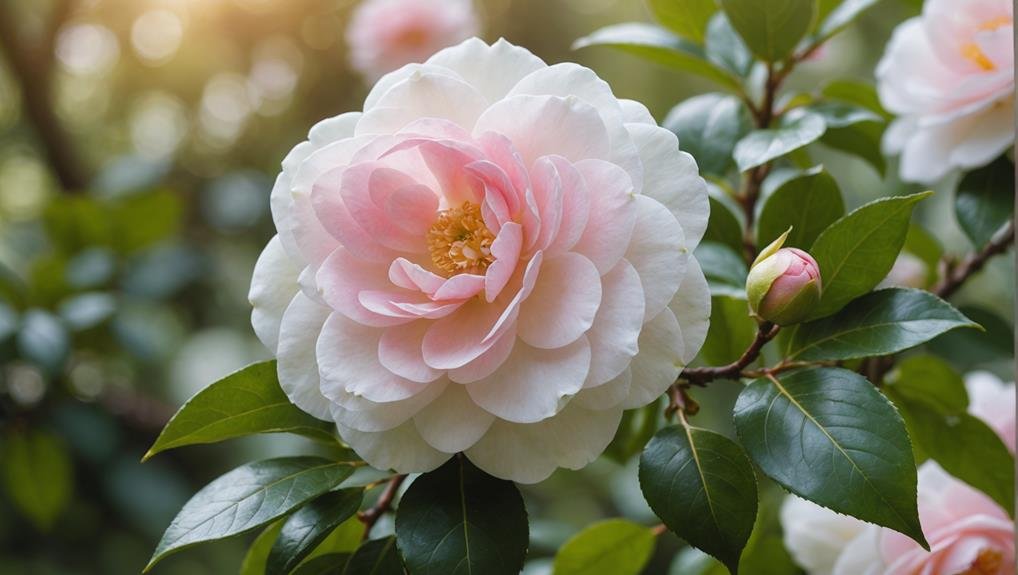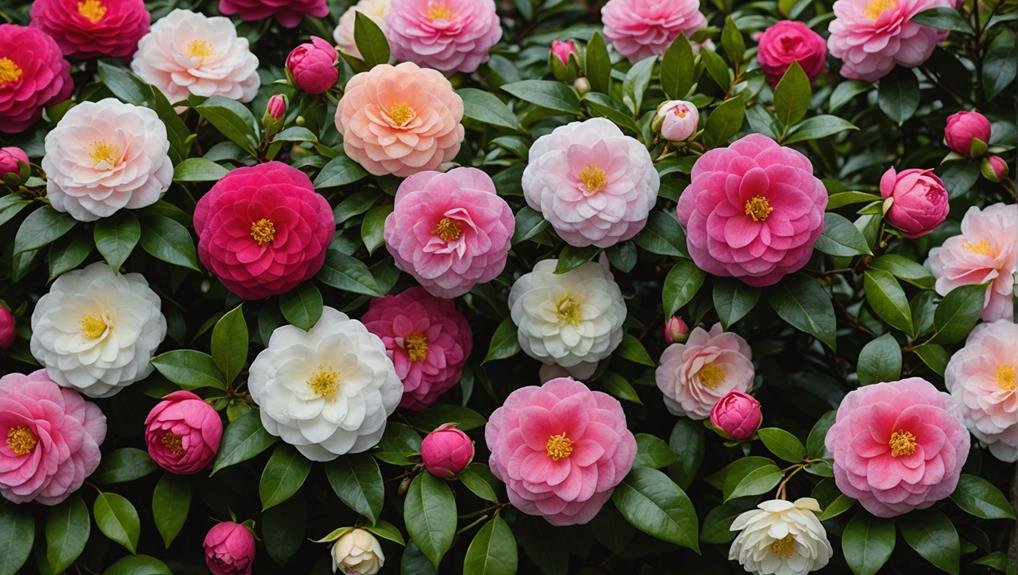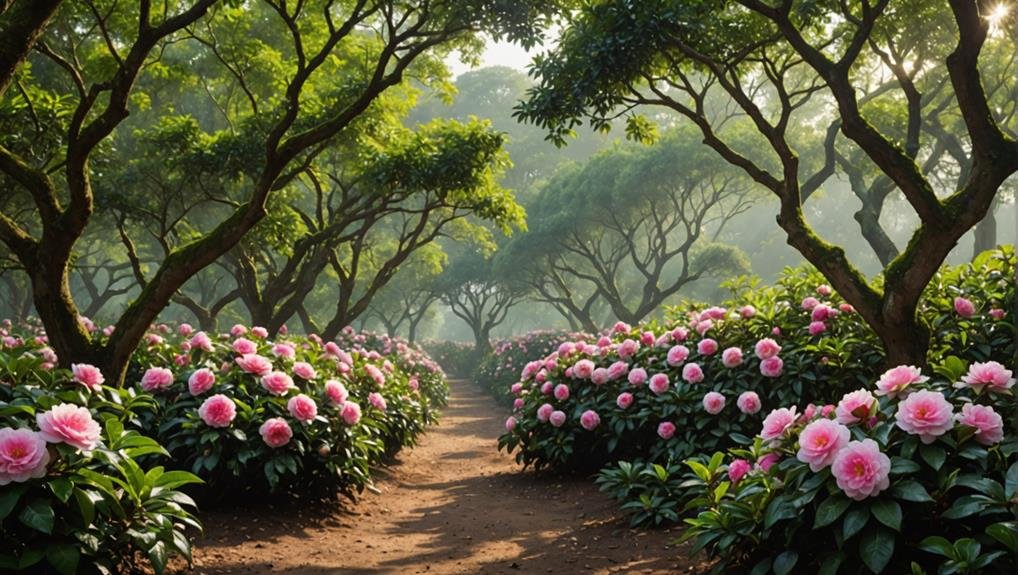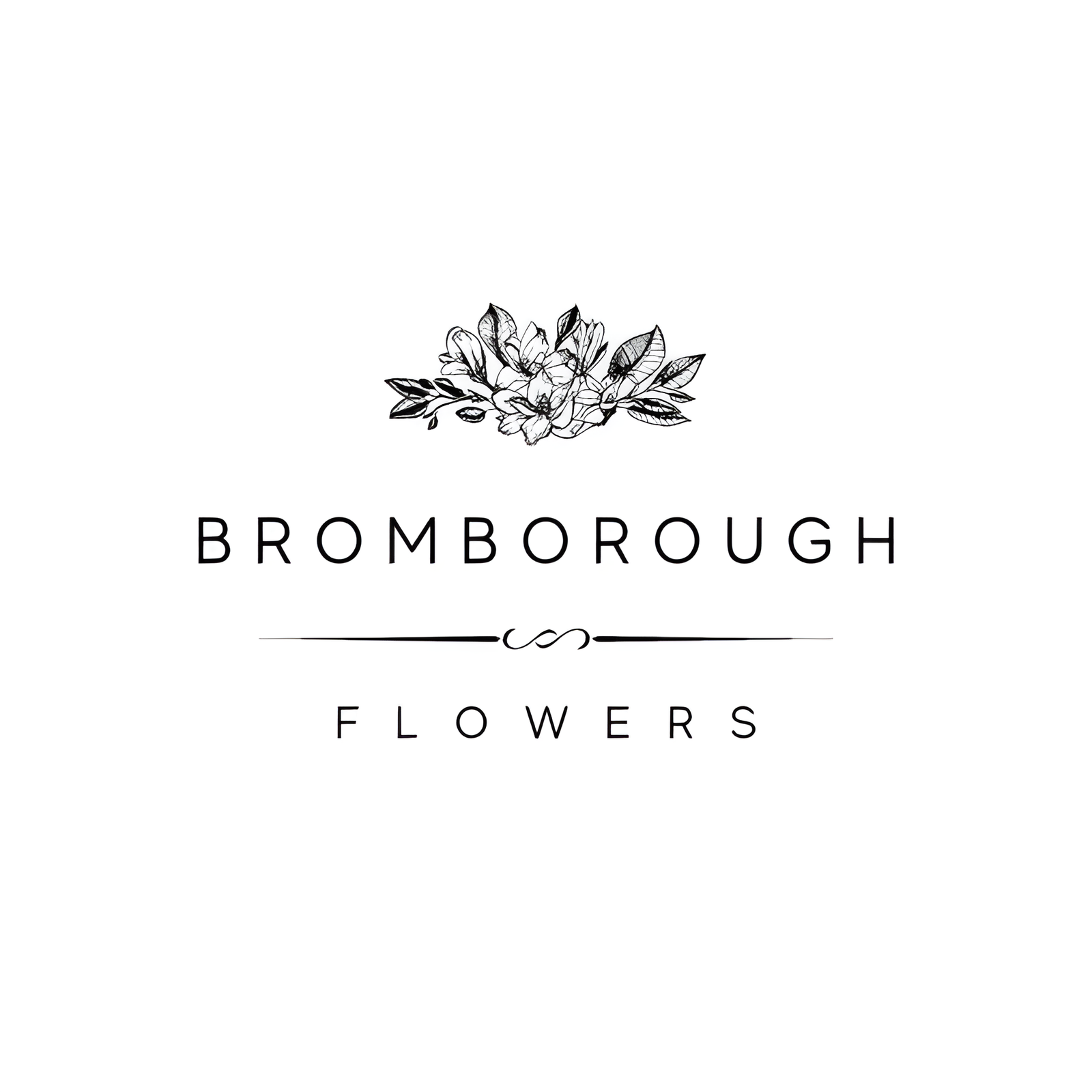The Camellia flower, celebrated for its timeless elegance and rich symbolism, stands out as a premier choice for wedding floral arrangements. Its lush, silk-like petals and a versatile palette ranging from pristine white to soft pink and champagne hues, make it an ideal candidate for both traditional and modern weddings. Beyond its aesthetic appeal, the Camellia carries profound cultural significance, symbolizing love, passion, purity, and innocence. However, the allure of Camellia extends far beyond its beauty and symbolism, presenting intriguing aspects that greatly enhance its appeal for nuptial celebrations.
Flower Overview

Originating in China and Japan, camellia flowers are renowned for their symbolism of love, passion, admiration, purity, and innocence. These attributes make camellias a highly sought-after choice for wedding floral arrangements, where their elegance and rich cultural heritage can add a touch of sophistication and emotional depth to the event.
Incorporated frequently into bridal bouquets and centerpieces, camellias offer not only aesthetic appeal but also convey meaningful sentiments. Their versatility allows them to be seamlessly integrated into various themes and styles, from traditional to contemporary.
Camellia silk flowers, such as those produced by HXSCOO, provide an excellent alternative for couples seeking durable and high-quality options. Made from premium silk material, these artificial blooms are ideal for wedding and home table decorations, maintaining their beauty without the need for extensive care.
Specifically, the white camellia silk flower from HXSCOO is celebrated for its ease of arrangement and handling. These features make them perfect for DIY floral arrangements, enabling couples to personalize their decor effortlessly.
Consequently, camellias, whether real or silk, remain a timeless and versatile choice for weddings, enhancing the ambiance through their symbolic and visual appeal.
Physical Description
The camellia flower features petals crafted from top-notch silk material, presented in a spotless white hue. This exquisite floral selection is particularly favored for its refined and classy appearance, making it perfect for various ornamental purposes. Each camellia flower measures roughly 45cm in size, offering a substantial presence that enhances any wedding or home table setting.
The camellia's structure is crafted to be easy to arrange and handle, catering to both professional florists and DIY enthusiasts. Its top-notch silk composition guarantees durability and a lifelike look, contributing to the overall aesthetic of any floral arrangement. The spotless white color of the camellia flower brings a sense of purity and sophistication, which is ideal for wedding decorations where elegance is paramount.
To provide a clear and concise overview of the camellia's physical attributes, please refer to the following table:
| Attribute | Description |
|---|---|
| Material | Top-notch silk |
| Color | Spotless white |
| Size | Approximately 45cm |
| Usage | Ideal for wedding and home table decoration |
Available Colour Varieties

In addition to its classic spotless white hue, camellia silk flowers are available in a variety of colors, including Champagne and Light Pink, to complement different wedding themes and color schemes.
The availability of these color options provides a versatile palette for brides and wedding planners, ensuring that the floral arrangements can be perfectly tailored to the specific aesthetic vision of the event.
White camellias, renowned for their purity and innocence, are a timeless choice that fits seamlessly into traditional and modern weddings alike. Champagne camellias, on the other hand, exude elegance and sophistication, making them ideal for upscale or vintage-themed weddings.
The light pink camellias symbolize admiration and are perfect for creating a romantic and soft atmosphere, blending beautifully with other pastel-colored flowers and decor.
These color varieties allow for extensive customization and coordination with other decorative elements. Whether you are aiming for a classic, elegant, or romantic wedding theme, selecting the appropriate camellia color can greatly enhance the overall ambiance.
Thus, choosing between white, Champagne, and light pink camellias can help create a cohesive and visually stunning wedding experience, tailored to your unique style and preferences.
Latin Name and Taxonomy
Known scientifically as Camellia japonica, this elegant flower belongs to the Theaceae family and is a prominent member of the Camellia genus. The Theaceae family, commonly referred to as the tea family, encompasses a variety of flowering plants known for their glossy, dark green leaves and showy blossoms.
Within the genus Camellia, there are over 300 species, including Camellia sinensis, which is renowned for producing tea leaves. Camellia japonica, in particular, stands out not only for its aesthetic appeal but also for its rich botanical classification.
Taxonomically, Camellias are classified under the order Ericales, which includes a diverse range of flowering plants. This classification underscores the evolutionary relationships and botanical characteristics that define the Camellia genus. The genus name itself is derived from the Latin name, highlighting its scientifically recognized status.
Often regarded as a symbol of love, the Camellia japonica is revered in various cultures for its beauty and elegance. As evergreen shrubs or small trees, they offer year-round foliage and seasonal blooms, making them a favored choice for weddings and other significant celebrations.
Understanding their taxonomy enriches our appreciation of these timeless floral symbols.
Geographical Origins

Historically, Camellia flowers originated in the regions of China and Japan, where they have been celebrated for their profound cultural and symbolic importance. In these countries, the elegant form of the Camellia has been a subject of admiration for centuries. In China, Camellias are cherished as symbols of love and devotion, often included in traditional artwork and literature. The flower's introduction to Europe is credited to Carl Linnaeus, who named it after the 17th-century botanist Georg Kamel.
The geographical origins of the Camellia are closely linked to its diverse symbolic meanings. In Japan, the Camellia, or 'Tsubaki,' holds special cultural importance and is frequently featured in ceremonies and traditional gardens. Chinese and Japanese cultivars have contributed significantly to the variety of colors and forms available today, each with its own unique significance.
| Country | Symbolism |
|---|---|
| China | Love and devotion |
| Japan | Cultural importance, elegance |
| Europe | Love, admiration, appreciation |
The Camellia's journey from Asia to the Western world has only enhanced its prestige. In Victorian Europe and the United States, the flower came to represent love, admiration, and appreciation, solidifying its position as a timeless choice for wedding arrangements and other meaningful celebrations.
Season Availability
Camellia flowers are mainly available during the winter and early spring seasons, flourishing in cooler weather conditions ideal for winter weddings. This seasonal availability makes camellias a perfect choice for couples seeking to integrate natural beauty into their winter nuptials.
The white blooms of camellia flowers stand out particularly well during this period, adding a classic and elegant touch to wedding floral arrangements. The timing of camellia blooms coincides with the off-peak season for many traditional wedding flowers, offering a unique alternative for brides and grooms.
However, it is important to note that availability can vary based on location and climate. In regions with milder climates, camellias may be accessible year-round, allowing for greater flexibility in wedding planning.
When considering camellia flowers for a wedding, it is crucial to factor in their seasonal availability to make sure they are in peak bloom. This careful planning not only guarantees the flowers' freshness and beauty but also aligns with the desired aesthetic of the wedding.
Growing Conditions

To thrive, camellias require acidic, well-draining soil and partial shade. These conditions are fundamental for guaranteeing robust growth and vibrant blossoms. Camellias also prefer a cooler climate, making them well-suited for regions with mild winters. However, they can tolerate occasional cold spells, which is advantageous for their cultivation.
Regular watering is essential during the growing season to maintain soil moisture and support healthy development. Pruning should be carried out post-flowering to promote new growth and maintain the plant's shape, enhancing its suitability for use in elegant floral designs.
Here are three key points to keep in mind for growing camellias:
- Soil and Light: Ensure the soil is acidic and well-draining, and provide partial shade to protect the plant from intense sunlight.
- Climate: Camellias thrive in cooler climates but can withstand winter temperatures, making them versatile for various regions.
- Maintenance: Regular watering and timely pruning after flowering are essential for fostering vigorous growth and appealing floral displays.
Despite their resilience, camellias are not immune to pests such as aphids and scale insects. Regular monitoring and appropriate pest control measures will help maintain their health, guaranteeing they continue to embellish wedding floral designs beautifully.
Cultural Significance
Beyond their horticultural requirements, camellias possess profound cultural significance, particularly in East Asia, where they symbolize love, devotion, and purity. In China, red camellias are emblematic of love and passion, often exchanged between lovers as a token of deep affection. White camellias, on the other hand, signify purity and innocence, making them suitable for various ceremonial contexts.
The influence of camellias extends to Japan as well, where they are revered for their beauty and symbolic meanings. Here, the camellia, or 'tsubaki,' is often associated with the samurai, symbolizing devotion and loyalty. This flower's cultural resonance is further amplified by its historical use in traditional Chinese medicine, where it was believed to have healing properties.
In Western culture, the camellia gained prominence through Coco Chanel, who adopted it as a personal emblem. The flower became synonymous with the brand, representing elegance, love, and sophistication. Additionally, in Victorian Europe and the United States, camellias were cherished as symbols of love and admiration.
The camellia's diverse cultural significance, spanning continents and centuries, underlines its timeless appeal and enduring symbolism of love and passion.
Typical Use in Weddings

Incorporating camellia flowers into weddings achieves an elegant and sophisticated ambiance, reflecting their symbolic meanings of love and devotion. These beautiful blooms are frequently chosen for their ability to add a touch of class and refinement to wedding decor. The versatility of camellias makes them ideal for various floral arrangements, contributing to a cohesive and stylish look throughout the event.
White camellias, in particular, symbolize purity and innocence, making them a popular choice for wedding ceremonies. Their presence can transform a venue with their understated beauty and long-lasting freshness.
Here are three common ways camellias are used in weddings:
- Bridal Bouquets: Camellias are often incorporated into bridal bouquets, providing a lush and elegant focal point for the bride's ensemble. Their full, rounded blossoms offer a classic yet contemporary appeal.
- Centerpieces: These flowers are perfect for creating sophisticated centerpieces that enhance the overall aesthetic of the reception tables. Their durable silk material guarantees they maintain their pristine appearance throughout the event.
- Floral Arrangements: Camellias are also used in various floral arrangements around the venue, such as altar decorations, aisle markers, and entrance displays, adding a cohesive touch of elegance to the entire wedding celebration.
Alternative Flower Types
While camellias bring an air of sophistication to wedding decor, exploring alternative flower types like roses, peonies, dahlias, and hydrangeas can offer unique symbolism and enhance the overall theme of your celebration.
Each of these flowers carries distinct meanings and characteristics that can complement and personalize your wedding arrangements.
Roses are the quintessential symbol of love and romance, making them a timeless choice for weddings. Their classic beauty and variety of colors can blend seamlessly into any wedding theme.
Peonies, known for their lush, full blooms, represent prosperity and good fortune, adding an element of opulence to your floral arrangements.
Dahlias stand out for their intricate petal structures and vibrant colors, symbolizing elegance and commitment, perfect for a sophisticated wedding ambiance.
Hydrangeas, with their voluminous clusters, convey heartfelt emotions and can add a touch of drama to centerpieces and bouquets.
Choosing alternative flower types not only adds variety but also allows couples to infuse their personal style into the wedding decor. Consulting with a professional florist can provide valuable insights into which flowers will best suit your preferences and wedding style, ensuring a harmonious and elegant floral display.
